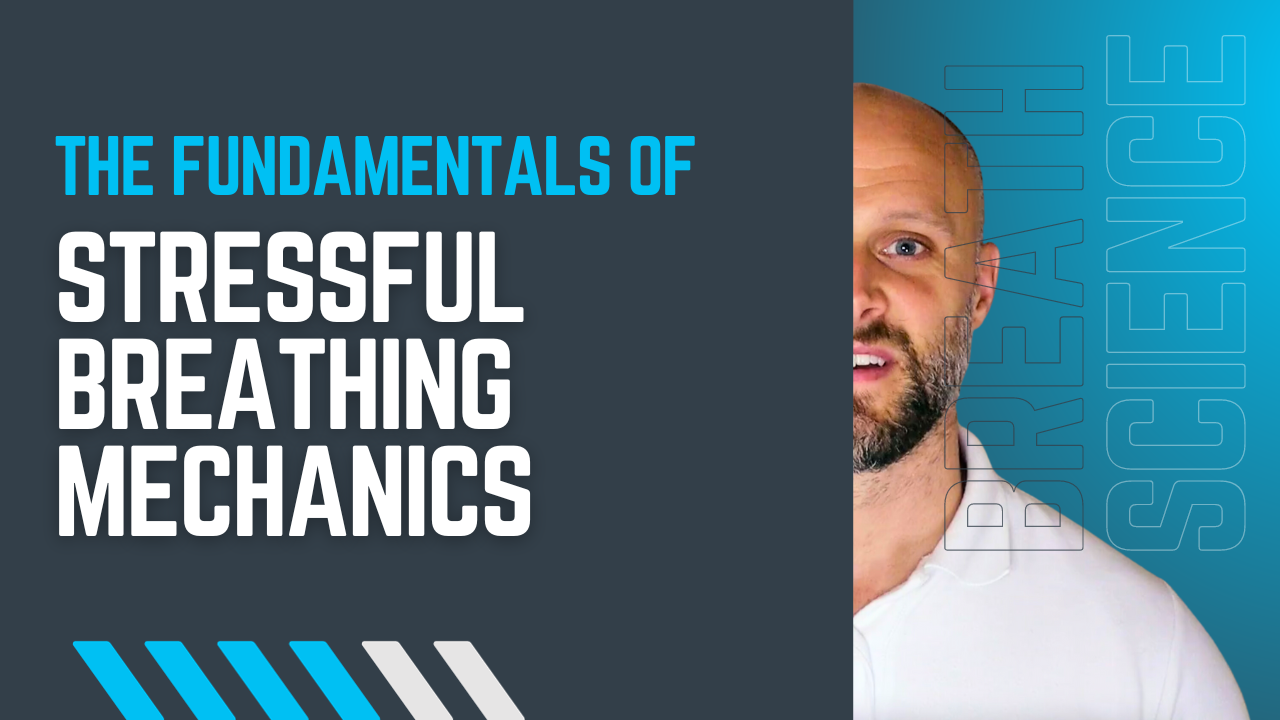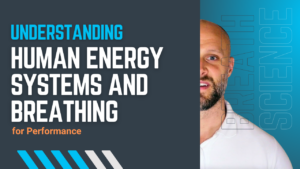Breathing Pattern Disorders: Stressful Breathing Mechanics

Breathing Pattern Disorders: Stressful Breathing Mechanics
Breathing pattern disorders are often enigmatic, yet they significantly influence our general well-being. Today, we shall embark on a journey into the captivating realm of breathing mechanics, exploring the delicate balance between functional and dysfunctional breathing. However, let us commence by comprehending what breathing mechanics entail and how they can impact stress and anxiety.
To watch the video or listen to the podcast, scroll to the bottom of the page
Breathing mechanics constitute the fundamental underpinnings of respiration. In technical terms, it is referred to as “ventilation.” The primary function of breathing is to facilitate the exchange of oxygen and carbon dioxide within our bodies. When we breathe, we draw in oxygen from our environment, allowing our cells to generate energy. Concurrently, we expel carbon dioxide to sustain the optimal pH levels in our bloodstream.
So, what orchestrates this intricate dance of inhalation and exhalation? It all hinges on the interplay between pressure and volume, and, indeed, it is steeped in physics. However, fret not; we shall not delve too deeply into the physics of it. We will keep that for the Breath Science Certification.
Visualize this: when you breathe in, your diaphragm contracts and your external intercostal muscles flex, gently expanding your ribcage. This expansion augments the volume within your thoracic cavity. Now, recollect Boyle’s Law?
It elucidates that the relationship between pressure and volume is inversely proportional. As the volume increases, the pressure decreases, which is when air rushes into your lungs. This process demands energy, as we must surmount the elastic recoil forces of our lungs, which naturally desire to spring back to their original shape.
During exhalation, the diaphragm relaxes, and the elastic recoil of the lungs expels air as pressure mounts. This represents your body’s innate, resting breathing pattern, regulated by an autonomous part of your brain known as the preboxing complex, akin to the automatic rhythm of your heart, functioning independently of factors such as CO2 levels.
You might wonder how this innate process can go awry. The answer lies in behaviour. Our breathing patterns are dictated by the motor control patterns in our nervous system, governing the mechanical aspects of how we breathe. For instance, a common issue is dysfunctional breathing, often manifesting as chest breathing or technically termed thoracic-dominant breathing. This transpires when individuals develop poor breathing motor patterns, which can result from lung diseases such as severe asthma, COPD, emphysema, or cystic fibrosis, where expiratory limitations compel them to breathe from a higher lung volume, known as hyperinflation.
Chest breathing, or thoracic-dominant breathing, adds extra effort owing to the rigid structure of the upper ribcage. To conserve energy, the body adapts by making the breath shallow, escalating the breathing rate. Regrettably, this results in inefficient gas exchange and ventilation, as each breath expels some air to the anatomical dead space in the trachea and bronchial tubes, where no gas exchange occurs. This sequence of events affects internal and external respiration on a biochemical level, but we shall reserve that for another discourse.
So, how can we detect and address these issues? Observing how someone breathes allows us to discern patterns such as chest breathing. To rectify this behavioural problem, we must consciously retrain the breathing pattern. This entails a process of repetition, or what we term breath work or breathing retraining.
I favour employing the NGSE principle as a starting point for breath mechanics: Nose, Gentle, Slow, and Expansive. Breathing through the nose encourages deeper breaths. A gentle, light breath at rest, slow breathing, and lateral expansion of the lower ribcage with a relaxed upper chest are pivotal components to aspire to. Practising this daily, even for just 10-15 minutes, can aid in transforming conscious behaviour into an unconscious habit through repetition.
In summary, comprehending breathing mechanics and identifying dysfunctional breathing patterns can be pivotal in managing stress and anxiety. It is all about finding a conscious practice that encourages nasal, gentle, slow, and expansive breathing. If you have questions about breathing mechanics or breath science, please do not hesitate to comment. Your support, such as subscribing to the channel, is deeply appreciated. Thank you




